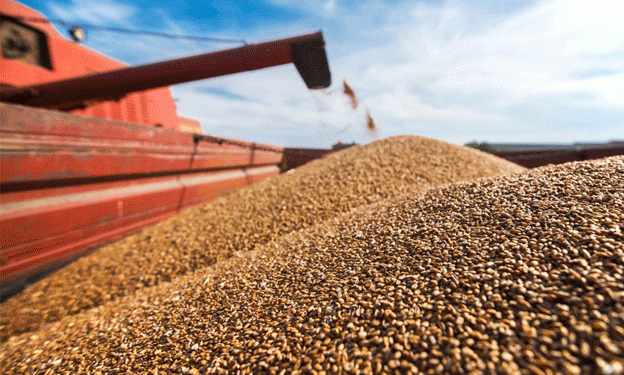The Russian wheat industry is facing a severe profitability crisis due to a significant decline in grain prices. Industry experts have reported a further decrease in wheat prices in the Russian market, which is expected to lead to reduced export volumes. Farmers across various regions are experiencing negative profitability, making wheat production unviable in some areas. This decrease in profitability poses risks of higher wholesale grain prices, which in turn could drive up food prices.
Declining Wheat Prices and Export Implications
According to data from SovEcon, the purchase prices for Russian wheat with 12.5% protein in deep-water ports dropped by 16% from June to July, reaching 15,200 rubles per ton (excluding VAT). This significant price drop is the largest since September 2023. The decline in prices is driven by unfavorable global market conditions and improved forecasts for the Russian wheat harvest.
Export prices for Russian wheat have been declining for over a month, with the influx of the new harvest supporting this trend. The Institute for Agricultural Market Studies (IKAR) reported that the price per ton of new harvest Russian wheat with 12.5% protein for FOB delivery in August was $216, down by $10 from the previous week. SovEcon also noted a price decrease to $221-$224 per ton from $227-$229 per ton the previous week. The approaching peak of the harvest season is expected to continue this downward trend.
Export Forecast and Regional Impact
Despite improved harvest forecasts, Russian wheat exports are anticipated to decrease in July due to declining exporter incomes and a potential reduction in harvest yields. SovEcon projects that Russian wheat exports in July will be between 3-3.5 million tons, down from a record 4.5 million tons in July of the previous year. The Russian Grain Union (RGU) reported a 6.7% decrease in grain exports in June, totaling 5 million tons, with wheat shipments remaining consistent at 4.3 million tons compared to June 2023. However, barley exports dropped by 26% to 385,000 tons, and corn exports fell by 41% to 325,000 tons.
Profitability Concerns and Market Dynamics
Farmers are particularly concerned about the decreasing profitability of grain production, especially wheat. According to Marat Nizamutdinov, Director of the Institute of Economics at Kazan State Agrarian University, the profitability of crop farming in Tatarstan has decreased more than fivefold compared to 2020. The profitability of grain and leguminous crops fell from 27.8% in 2020 to 4.9% in 2024, and wheat profitability dropped from 32.5% to 2.8%. As a result, many farms are shifting to more profitable oilseed and soybean cultivation.
Stanislav Vetoshkin, an expert at Yakov and Partners, highlighted that profitability in grain crops has decreased to 10-15% in southern regions, with profitability close to zero in the Volga Federal District (PFD). The Ministry of Agriculture reported that agricultural production profitability in Russia reached 19% in 2023, with grain sector profitability at 17%. However, the profitability of wheat production was negative due to rising production costs.
Government Measures and Future Outlook
The Russian government has implemented a grain damping mechanism since June 2021, introducing floating duties on wheat, corn, and barley exports and returning the proceeds to subsidize agricultural producers. The duties are calculated weekly based on export contract prices registered on the Moscow Exchange. The base price for calculating duties was initially 15,000 rubles per ton of wheat and 13,800 rubles per ton of barley and corn. In June 2023, the base price was increased to 17,000 rubles for wheat and 15,800 rubles for barley and corn. As of June 28, 2024, the base price for wheat is 18,000 rubles, and for barley and corn, it is 16,800 rubles per ton.
Despite these measures, industry experts are concerned about the long-term viability of wheat production in Russia. Anastasia Prikladova, Associate Professor at the Plekhanov Russian University of Economics, noted that the worsening market conditions for Russian exporters are due to both external and internal factors. She pointed out that global wheat futures prices have returned to April levels, trading at $160 per ton, 20% lower than at the end of May. The decline is attributed to expectations of a record global grain harvest and the strengthening of the ruble, which reduces export revenues for Russian farmers.
The current profitability crisis in the Russian wheat industry highlights the challenges faced by farmers and the broader agricultural sector. The significant decline in grain prices, combined with rising production costs, threatens the sustainability of wheat production in many regions. Without effective measures to address these issues, the industry may see a continued shift away from wheat cultivation towards more profitable crops, potentially impacting the global wheat market and food prices.
Error




